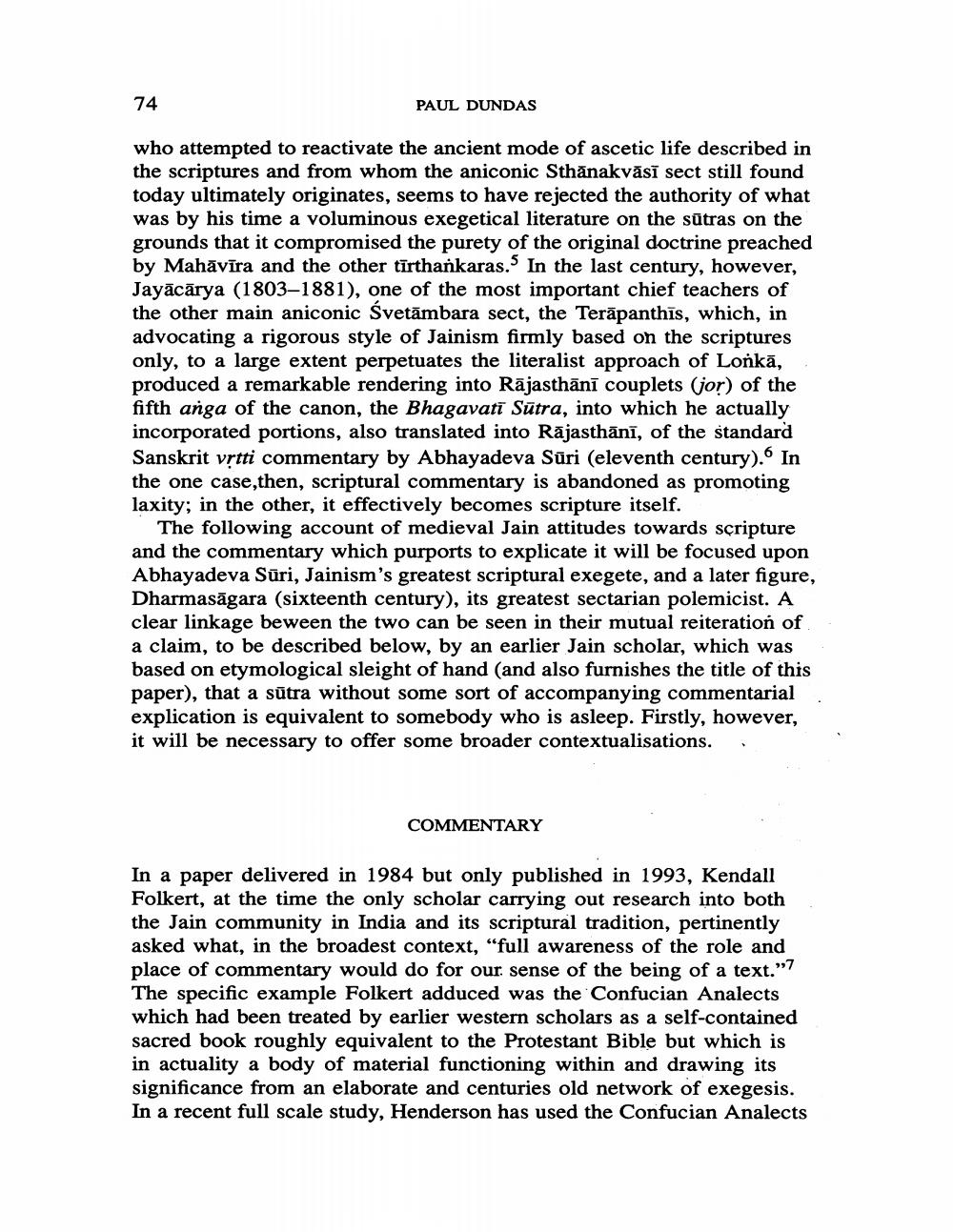Book Title: Somnolent Stras Sriptural Cmmentary In Svetambara Jainism Author(s): Paul Dundas Publisher: Paul Dundas View full book textPage 2
________________ 74 PAUL DUNDAS who attempted to reactivate the ancient mode of ascetic life described in the scriptures and from whom the aniconic Sthănakvāsī sect still found today ultimately originates, seems to have rejected the authority of what was by his time a voluminous exegetical literature on the sūtras on the grounds that it compromised the purety of the original doctrine preached by Mahāvīra and the other tīrthankaras. In the last century, however, Jayācārya (1803–1881), one of the most important chief teachers of the other main aniconic Svetāmbara sect, the Terāpanthīs, which, in advocating a rigorous style of Jainism firmly based on the scriptures only, to a large extent perpetuates the literalist approach of Lońkā, produced a remarkable rendering into Rājasthānī couplets (jor) of the fifth anga of the canon, the Bhagavati Sūtra, into which he actually incorporated portions, also translated into Rājasthānī, of the standard Sanskrit vrtti commentary by Abhayadeva Sūri (eleventh century). In the one case, then, scriptural commentary is abandoned as promoting laxity; in the other, it effectively becomes scripture itself. The following account of medieval Jain attitudes towards scripture and the commentary which purports to explicate it will be focused upon Abhayadeva Sūri, Jainism's greatest scriptural exegete, and a later figure, Dharmasāgara (sixteenth century), its greatest sectarian polemicist. A clear linkage beween the two can be seen in their mutual reiteration of a claim, to be described below, by an earlier Jain scholar, which was based on etymological sleight of hand (and also furnishes the title of this paper), that a sūtra without some sort of accompanying commentarial explication is equivalent to somebody who is asleep. Firstly, however, it will be necessary to offer some broader contextualisations. . COMMENTARY In a paper delivered in 1984 but only published in 1993, Kendall Folkert, at the time the only scholar carrying out research into both the Jain community in India and its scriptural tradition, pertinently asked what, in the broadest context, "full awareness of the role and place of commentary would do for our sense of the being of a text."7 The specific example Folkert adduced was the Confucian Analects which had been treated by earlier western scholars as a self-contained sacred book roughly equivalent to the Protestant Bible but which is in actuality a body of material functioning within and drawing its significance from an elaborate and centuries old network of exegesis. In a recent full scale study, Henderson has used the Confucian AnalectsPage Navigation
1 2 3 4 5 6 7 8 9 10 11 12 13 14 15 16 17 18 19 20 21 22 ... 29
